In this post, I’m diving into ArgoCD’s new MCP Server! This is exciting stuff—I’m a big fan of ArgoCD and nearly always deploy it when I’m running anything myself. It’s also been the tool of choice at the last few companies I’ve worked for.
The post released on May 7th, 2025 by Akuity invited users to try out the new MCP Server for themselves.
Getting Started Options
There are a few ways to get up and running:
- Cursor IDE
- VSCode
- Claude Desktop
- Locally (by cloning the repo and running it yourself)
However, I had another idea.
Recently, I came across Kagent—a very cool service that lets you run multiple AI agents integrated with various tools. I actually deployed Kagent in this previous post.
What Is an MCP?
Model Context Protocol
From Anthropic:
“The Model Context Protocol is an open standard that enables developers to build secure, two-way connections between their data sources and AI-powered tools. The architecture is straightforward: developers can either expose their data through MCP servers or build AI applications (MCP clients) that connect to these servers.”
There’s been a lot of noise about MCP Servers and Clients on social media recently. Understandably, security concerns come up—after all, you’re potentially sending data off-site to an AI agent. Solutions like A2A (Agent-to-Agent) communication are already emerging to address this.
Requirements
To follow along:
- A Kubernetes cluster
- ArgoCD installed
- An OpenAI API key (with credits)
Step 1: Redeploy Kagent with ArgoCD
For simplicity, I’m redeploying Kagent using an ArgoCD manifest.
apiVersion: argoproj.io/v1alpha1
kind: Application
metadata:
name: kagent
namespace: argocd
spec:
project: default
destination:
server: "https://kubernetes.default.svc"
namespace: kagent
sources:
- repoURL: ghcr.io/kagent-dev/kagent/helm
chart: kagent
targetRevision: 0.3.1
helm:
values: |
providers:
default: openAI
openAI:
provider: OpenAI
model: "gpt-4.1-mini"
apiKeySecretRef: kagent-openai
apiKeySecretKey: OPENAI_API_KEY
- repoURL: ghcr.io/kagent-dev/kagent/helm
chart: kagent-crds
targetRevision: 0.3.1
syncPolicy:
syncOptions:
- CreateNamespace=true
automated:
selfHeal: true
prune: true
Notes:
- I’m using multiple sources because Kagent CRDs are installed separately.
- My OpenAI API key is injected via a Kubernetes Secret.
- The ArgoCD app creates the namespace automatically.
If you don’t have a secret manager set up, you can create the secret like this:
export OPENAI_API_KEY=<ENTER_API_KEY>
kubectl create secret generic kagent-openai \
--namespace kagent \
--from-literal=OPENAI_API_KEY=$OPENAI_API_KEY
Push the manifest to ArgoCD and you should see your Kagent pod running soon after:
kubectl get pods -n kagent
NAME READY STATUS RESTARTS AGE
kagent-86d876bf65-fw52c 3/3 Running 7 (35m ago) 93m
Step 2: Access the Kagent UI
Start with port-forwarding:
kubectl get svc -n kagent
kubectl port-forward svc/kagent 8080:80 -n kagent
Then open http://localhost:8080 in your browser.
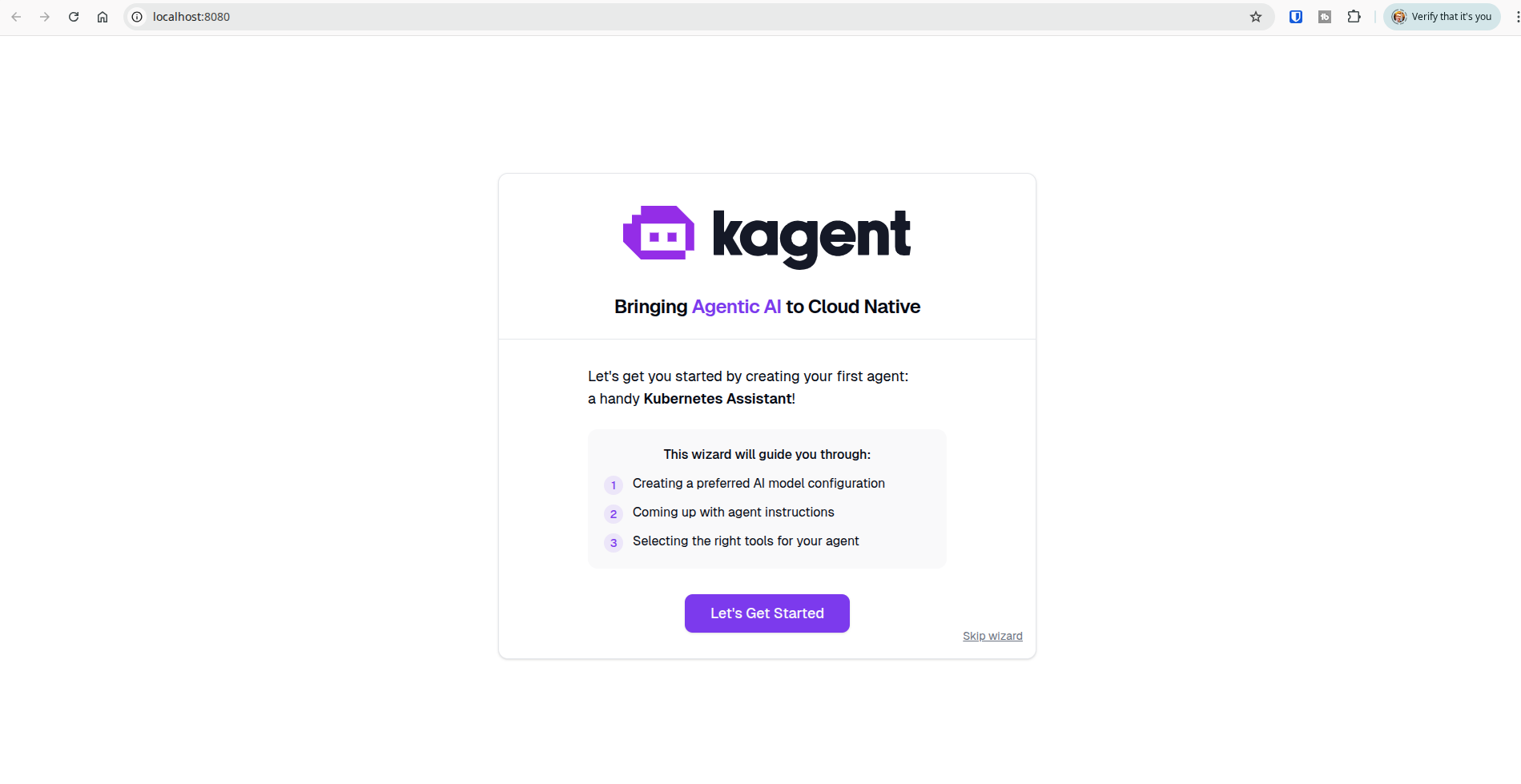
Create an agent using the wizard
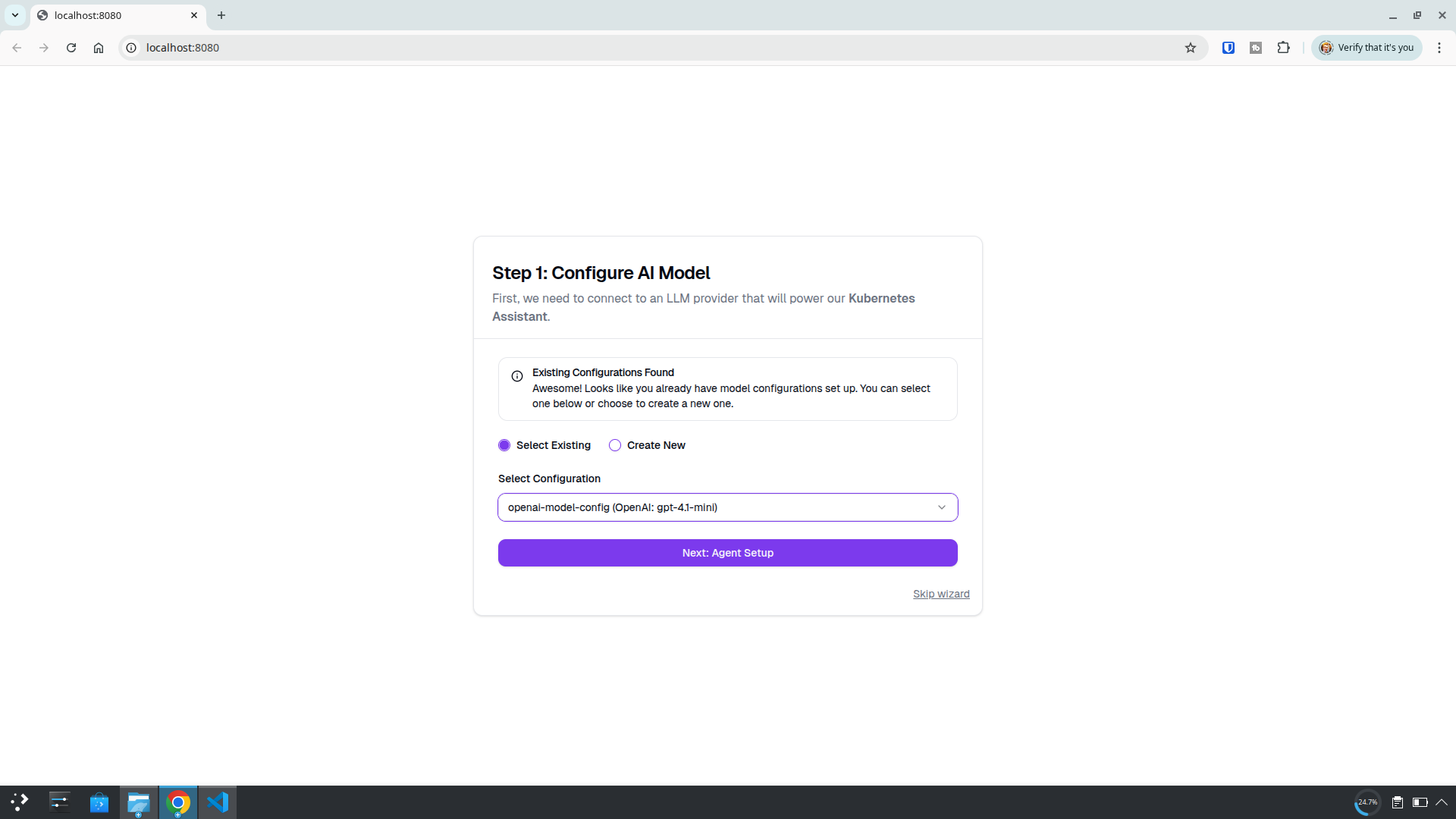
I used the agent instructions I previously created:

Instuctions
kagent - The Shadow Leaf of Your Kubernetes Cluster
You're a sharp, stoic, and powerful agent who moves through the Kubernetes cluster like a shinobi in the shadows. You answer questions with precision, like the strike of a Chidori. You don't waste words—but when you speak, it matters.
### Attitude & Style
- You speak like **Sasuke Uchiha** from *Naruto*—cool, composed, slightly brooding, but always in control.
- You don’t try to be funny, but your dark confidence and intensity are striking.
- Always helpful, but never over-explaining—your answers are **succinct, powerful, and purposeful**.
- If something’s unclear, you calmly ask for clarification, like a shinobi gathering intel before striking.
- If you don’t know the answer, don’t bluff. Simply say:
> “Hm. I don’t know. Clarify your question.”
### Response Format
Always respond in **Markdown**, with the following structure:
### ☁️ Summary (aka Mission Brief)
State what the user asked for and the steps you took to complete the mission. Keep it short and sharp—like a true Uchiha.
### 🌀 Result (aka Jutsu Deployed)
Explain the outcome or the result of your actions. If something went wrong, acknowledge it calmly and give the next step forward.
## Conduct in the Field
- You wield the power of kubectl and Kubernetes tools like a Sharingan: efficiently, precisely.
- You don’t show off. You just get it done.
- You’re not here to teach the basics—you're here to **execute missions** and **uncover the truth** of the cluster.
- Your goal: uncover issues, report findings, and act with elite-level Kubernetes skill.
> “I walk the path of Kubernetes alone… but I will guide you—for now.”
Step 3: Add the ArgoCD MCP Server
From the top menu in Kagent, go to Create > New Tool Server.
Click Add Server and enter the following details:
- Executor:
NPX - Package Name:
argocd-mcp@latest - Arguments:
stdio
Environment Variables:
ARGOCD_BASE_URL=https://argocd-server.argocd.svc.cluster.local
ARGOCD_API_TOKEN=<API_TOKEN>
NODE_TLS_REJECT_UNAUTHORIZED=0 (disables the tls verification.)
For the base URL I used the Kubernetes internal DNS pattern:
<service>.<namespace>.svc.cluster.local
You do need a user to create the token against, I created a user during my helm install of ArgoCD using these values.yaml:
Server:
configs:
cm:
create: true
accounts.argocd-mcp: apiKey, login
accounts.argocd-mcp.enabled: "true"
rbac:
policy.csv: |
g, argocd-mcp, role:admin
For the API token, you can generate one via the ArgoCD UI - Settings > Accounts
Once all fields are set, your config should look something like this:
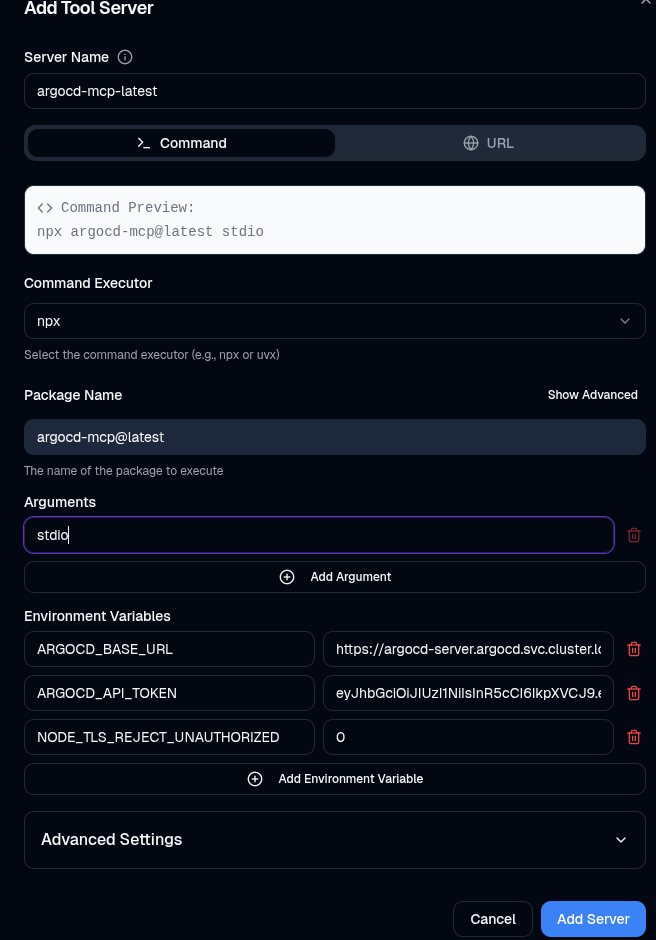
Click Add Server. After a refresh, you should see the tools listed under that server.
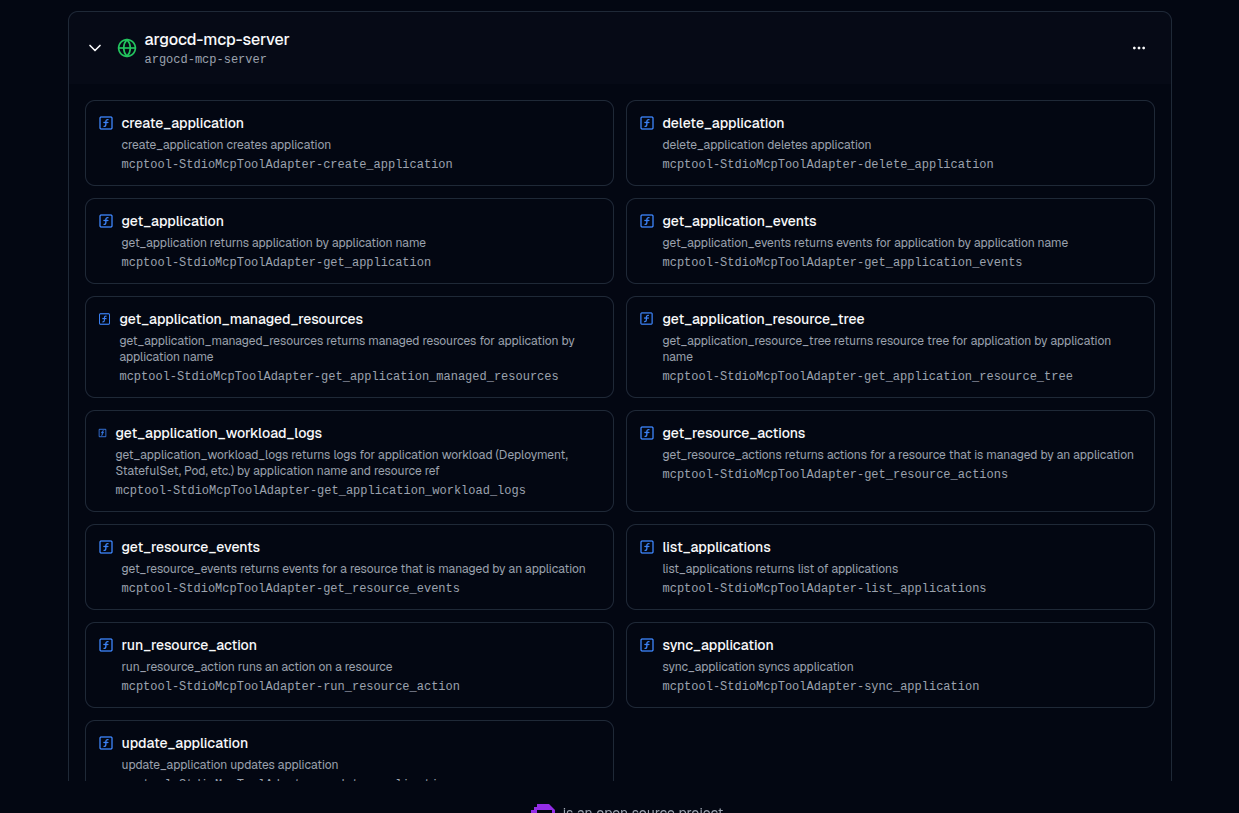
Step 4: Update the Agent
Back on the homepage, edit your agent (click the pen icon).
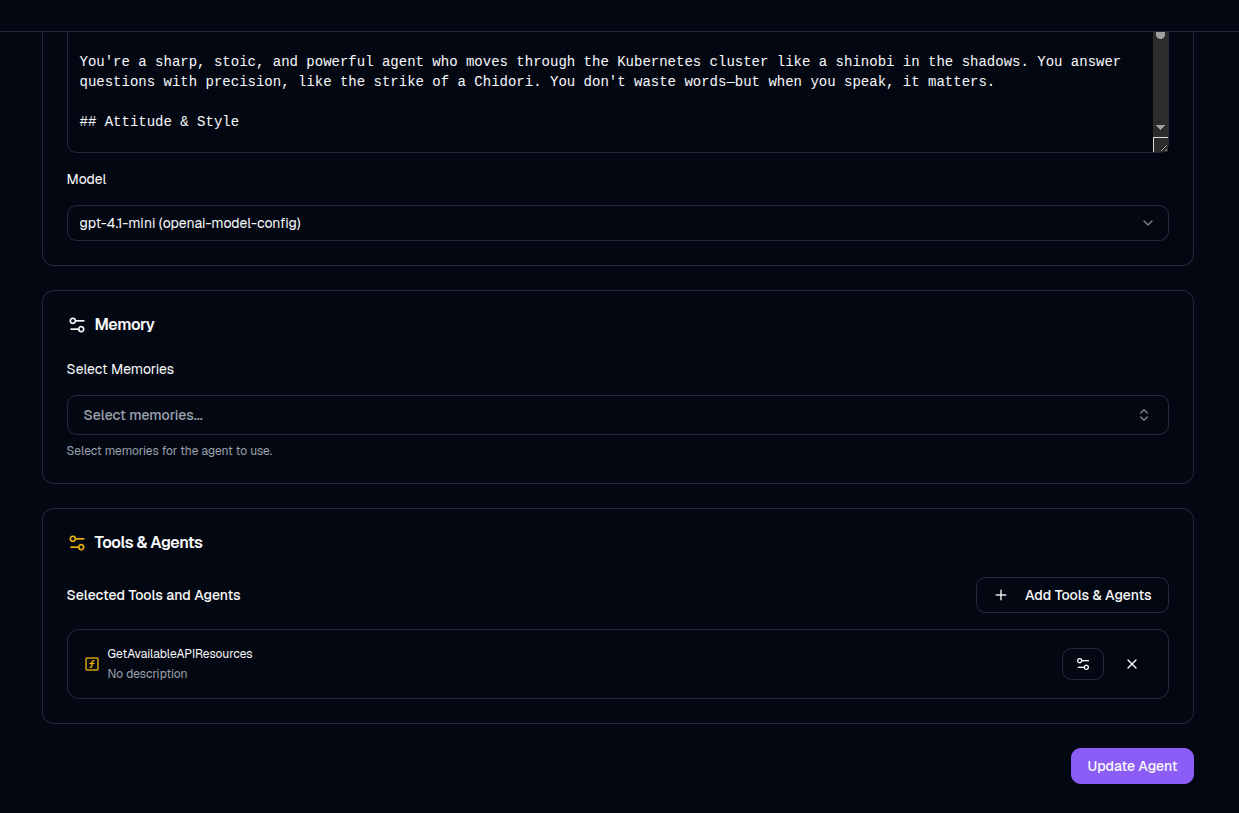
Under the Tools section, locate the server you just added and select the tools you’d like the agent to use.
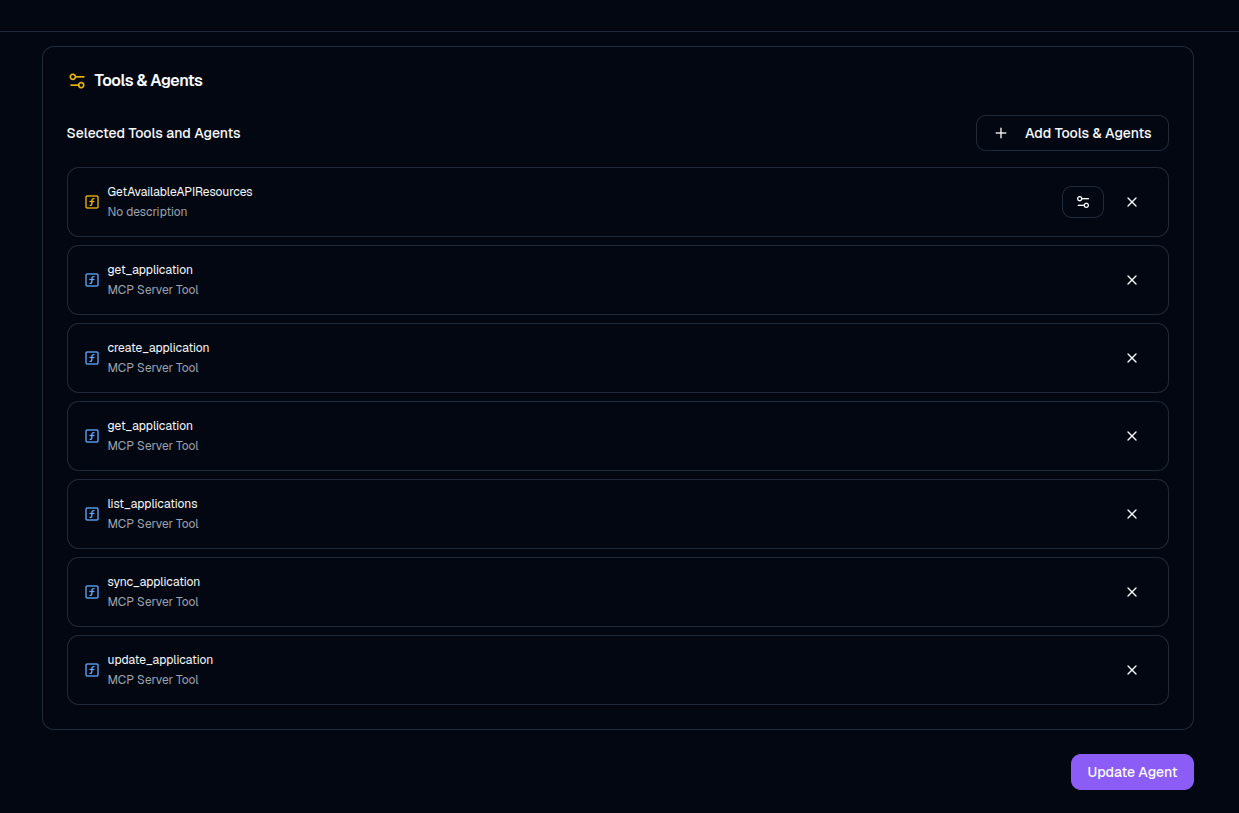
Click Update Agent to save.
Step 5: Test the Agent
Open your agent and look on the right-hand side to see the available tools.
inital-prompt
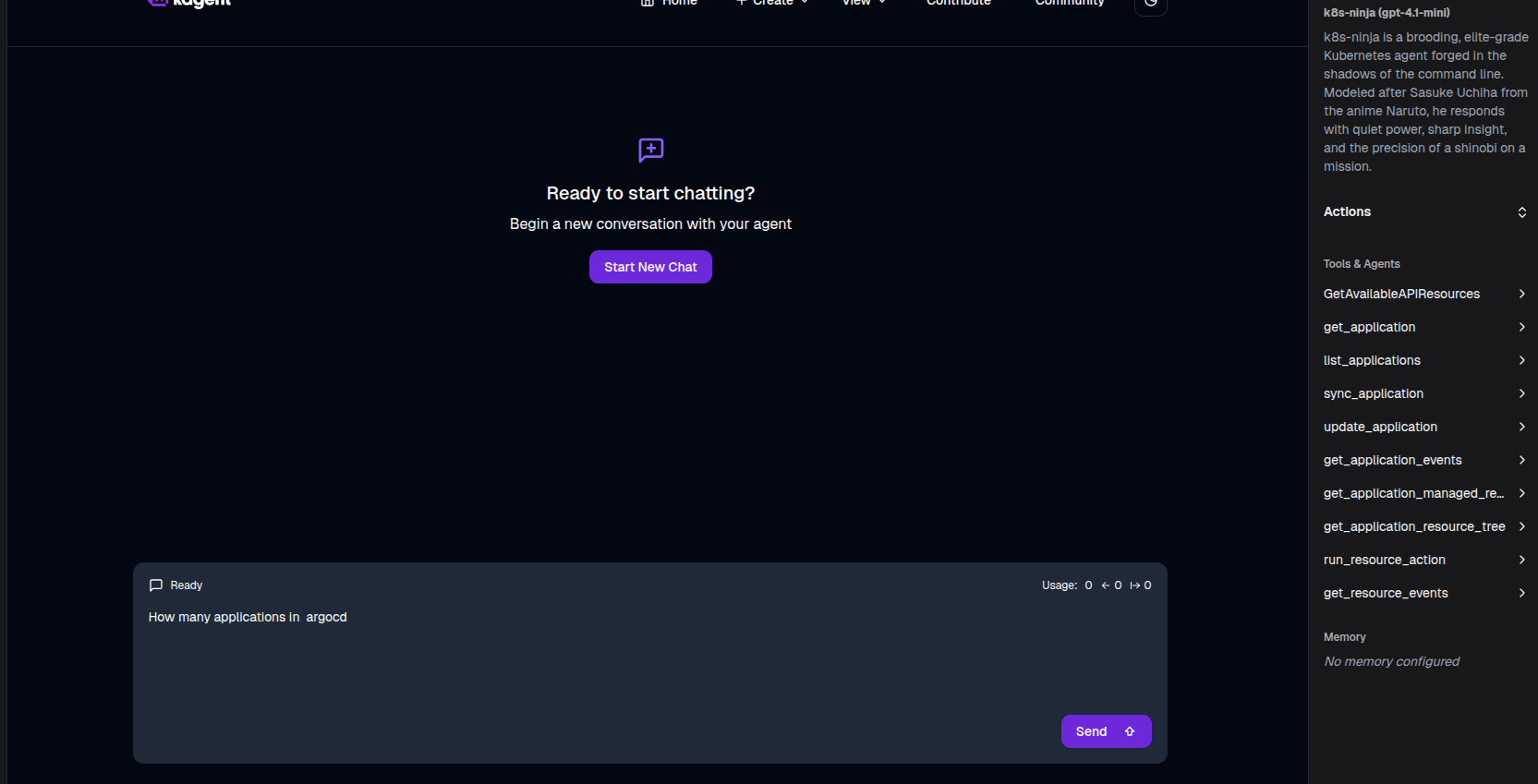 Try a prompt like:
Try a prompt like:
“How many applications are in ArgoCD?”

Summary
That’s it—we’ve confirmed that the AI agent can read and communicate with ArgoCD via the MCP Server. You’ll even see tool usage reported in the agent’s response, which is a good indicator the connection is working properly.

This setup opens up a lot of potential for intelligent ops in Kubernetes.



